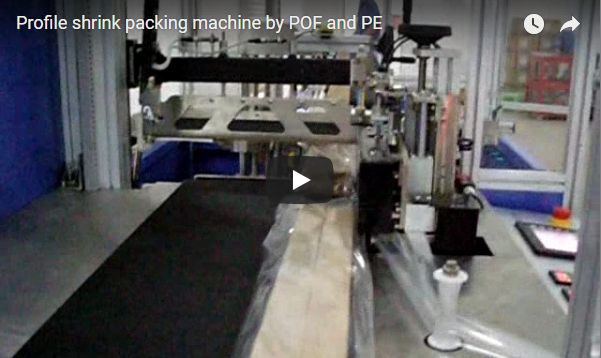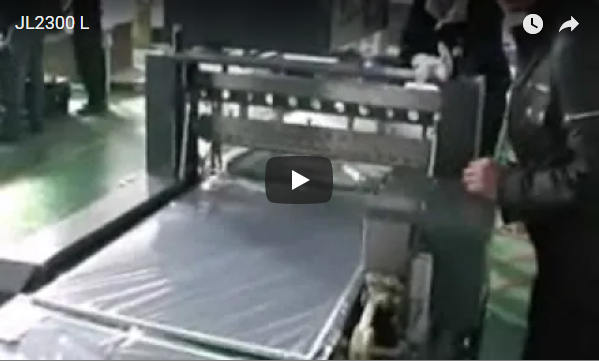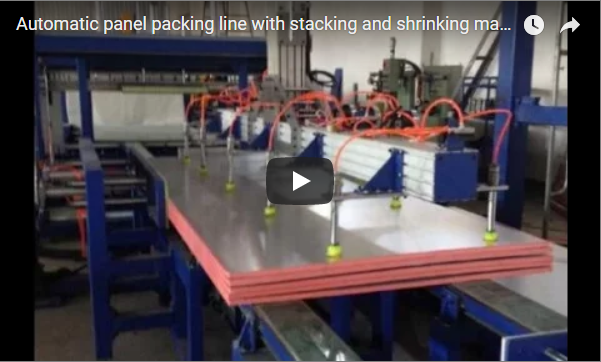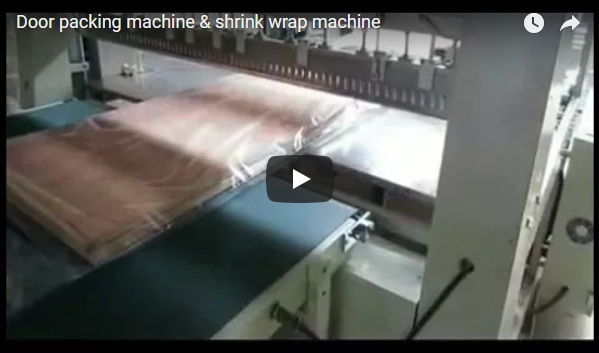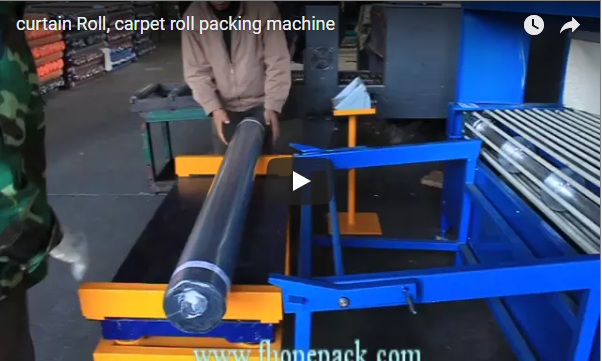1. Introduction: Advancing Guide Rail and Profile Packaging
The efficient and secure packaging of elongated products like guide rails and aluminum profiles presents unique challenges in manufacturing and logistics. Traditional methods often fall short, leading to potential damage and increased costs. This article details an advanced automatic bagging machine, specifically engineered as a flow wrapping solution, designed to optimize the packaging process for these sensitive components, ensuring product integrity and operational efficiency. We will delve into its technical specifications, design features, operational benefits, and user experience, aligning with the rigorous standards expected by industry professionals familiar with MM MaschinenMarkt.
2. The Challenge: Inadequate Protection for Precision Components
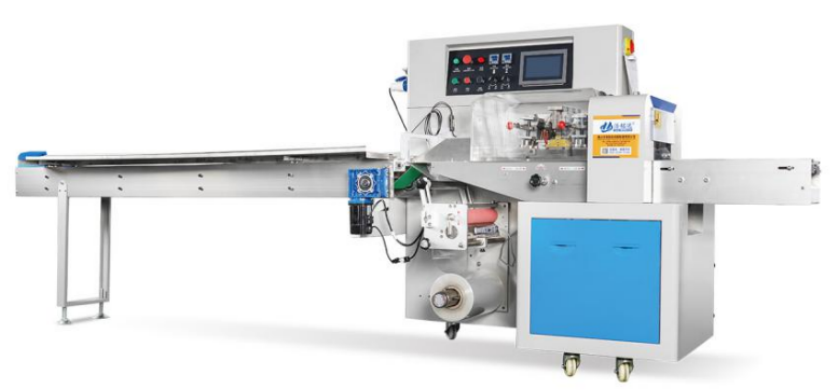
Manufacturers and distributors, particularly in demanding markets, face significant hurdles with manual or semi-automatic packaging of guide rails and aluminum profiles. Key challenges include:
- Incomplete Sealing: Manual bagging or applying protective film often leaves ends exposed or improperly sealed, making the product vulnerable to moisture, dust, and physical damage, especially at critical end face cuts.
- Surface Damage: Scratches, abrasions, and dents incurred during handling and transportation can compromise the quality and functionality of precision components.
- Inconsistency: Manual processes lead to variations in package quality, tightness, and appearance.
- Low Throughput: Manual packaging is inherently slow and labor-intensive, creating bottlenecks in production and increasing operational costs.
- Poor Presentation: Loose or untidy packaging can negatively impact brand perception and customer satisfaction.
3. The Solution: Automated Flow Wrapping Technology
To overcome these limitations, this automatic bagging machine utilizes flow wrapping (also known as Horizontal Form-Fill-Seal or HFFS) technology. The process involves:
- Infeed: Products are fed onto the conveyor belt.
- Film Dispensing: A continuous flat film web is drawn from a roll.
- Forming: The film is shaped into a continuous tube around the product via a forming box.
- Longitudinal Sealing: The bottom or top edges of the film tube are sealed together, creating the main seam.
- End Sealing and Cutting: Rotating or box-motion sealing jaws create sealed ends (cross seals) between products and cut them apart, resulting in a fully sealed package.
- (Optional) Shrinking: For applications requiring a tighter fit, the bagged product can pass through an integrated or separate shrink tunnel.
This automated process ensures a consistent, fully sealed, and protective package for every item.
4. Technical Specifications and Design Data
Understanding the machine's capabilities requires a look at its core technical data:
| Parameter | Specification | Notes |
|---|---|---|
| Machine Type | Automatic Flow Wrapping / Bagging Machine | Suitable for long, rigid products |
| Applicable Product Size | Length: 1000 – 2100 mm | Adjustable range to accommodate various product lengths |
| Width: 50 – 100 mm | Accommodates typical profile dimensions | |
| Height: 50 – 100 mm | ||
| Packaging Speed | 5 - 15 packs/minute (approx.) | Dependent on product length and film type |
| Control System | PLC (Programmable Logic Controller) | Ensures reliable and precise operation |
| Operator Interface | Touch Screen HMI (Human Machine Interface) | For easy parameter setting, diagnostics, and recipe storage |
| Drive System | Motor-Driven Conveyors & Sealing Mechanisms | May utilize servo motors for high precision positioning and cutting |
| Construction Material | Carbon Steel Frame | Provides rigidity, durability, and long service life |
| Contact parts potentially Stainless Steel | Depending on specific requirements (e.g., hygiene) | |
| Power Supply | 380V / 50Hz / 3-Phase | Standard industrial power requirement (confirm specific model needs) |
| Film Compatibility | PE (Polyethylene), POF (Polyolefin) | Suitable for various heat-sealable films, including shrink films |
| Sealing Type | Heat Sealing (Longitudinal & End Seals) | Ensures secure closure |
| Operation Mode | Fully Automatic | Minimizes manual intervention |
5. Key Components and Functionality Breakdown
The machine's efficiency stems from its well-engineered components:
- Infeed Conveyor: A robust belt or roller conveyor designed to handle the length and weight of guide rails/profiles, ensuring smooth transport into the wrapping section.
- Adjustable Film Forming Box: Allows quick adaptation to different product cross-sections (within the 50-100mm W/H range), ensuring a consistently formed film tube.
- Film Roll Holder: Equipped with brakes or tension control for smooth film unwinding and potentially automatic splicing options for continuous operation.
- Longitudinal Sealing Unit: Typically uses heated rollers or belts to create a strong, continuous seam along the package length.
- End Sealing Jaws: Precision-engineered jaws (often rotary or box-motion type) provide consistent heat and pressure for secure cross seals. Integrated cutters separate the finished packages cleanly.
- Touch Screen Control Panel: Centralizes machine operation. Allows operators to set parameters like bag length, sealing temperature, and speed. Stores product recipes for quick changeovers.
- Safety Features: Includes emergency stops, safety interlocks on guards, and potentially light curtains to protect operators.
![Image Alt Text: Diagram showing the key components of the automatic flow wrapping machine] (Instruction: Retain original images if present, ensure descriptive alt text)
6. Operational Benefits and ROI Enhancement
Implementing this automated packaging solution delivers significant advantages:
- Superior Product Protection: Full sealing prevents scratches, dust ingress, and moisture damage, significantly reducing rejects and returns.
- Increased Throughput: Automation dramatically increases packaging speed compared to manual methods, eliminating bottlenecks and boosting overall productivity.
- Reduced Labour Costs: Frees up personnel previously engaged in manual packaging for higher-value tasks.
- Consistent Package Quality: Delivers uniform, professional-looking packages every time, enhancing brand image.
- Material Efficiency: Optimized film usage compared to inconsistent manual wrapping can lead to material cost savings.
- Operational Flexibility: The touch screen interface allows for quick adjustments to accommodate different product dimensions within the specified range.
7. User Experience and Maintenance Insights
From an operator's perspective, the machine is designed for ease of use:
- Intuitive HMI: The touch screen simplifies setup, operation, and troubleshooting with clear menus and diagnostic information. Recipe storage enables rapid changeovers between different product runs.
- Reliability: The robust carbon steel construction and quality components contribute to dependable performance in industrial environments.
- Standard Maintenance: Routine maintenance typically involves cleaning, lubrication of moving parts, inspection of seals and cutters, and checking electrical connections, similar to other industrial machinery. Access points are usually designed for convenient maintenance.
Personal Experience Note: Users often report a significant reduction in packaging-related stress once the machine is commissioned. The consistency and reliability allow teams to focus on production rather than constantly troubleshooting packaging issues. The ability to quickly recall settings for different profile types via the HMI is frequently cited as a major time-saver.
8. Application Spotlight: Guide Rails and Aluminum Profiles
This machine is particularly well-suited for:
- Linear Guide Rails: Protecting the precision-ground surfaces and raceways is critical. The full wrap prevents contamination and physical damage.
- Aluminum Extrusions: Whether architectural profiles, T-slot profiles, or custom shapes, the machine provides a clean, secure wrap that prevents surface scratches and preserves the finish.
- Other Long Products: Potential applications extend to pipes, tubes, timber mouldings, and other elongated items requiring protective packaging.
9. Integration and Customization Options
The automatic bagging machine can typically be integrated into existing production lines, often placed downstream from cutting, milling, or finishing processes. Customization options beyond basic dimension adjustments might include:
- Stainless steel construction for specific environments.
- Integration of printing or labeling units.
- Specific conveyor lengths or types.
- Integration with upstream/downstream automation (e.g., robotic loading/unloading).
10. Conclusion and Contact Information
Investing in an automatic bagging machine (flow wrapper) offers a robust solution to the persistent challenges of packaging guide rails and aluminum profiles. By enhancing protection, increasing speed, reducing costs, and ensuring consistency, this technology provides a clear competitive advantage. The technical design, durable construction, and user-friendly interface make it a valuable asset for manufacturers aiming to optimize their end-of-line packaging operations.
For further technical details, specific application consulting, or to receive a customized quote based on your unique requirements, we encourage you to contact our expert team. Let us help you implement a packaging solution that meets the demanding standards of your industry.
11. Frequently Asked Questions (FAQs)
1. How does the machine improve packaging efficiency compared to manual methods?
- The fully automatic operation significantly increases speed (e.g., 5-15 packs/min vs. much slower manual rates) and eliminates the variability and potential errors inherent in manual bagging.
2. How adaptable is the machine to different profile sizes?
- It features adjustable parameters via the HMI and mechanical adjustments (like the forming box) to handle products within the specified range (L: 1000-2100mm, W/H: 50-100mm), allowing for versatile production runs.
3. What are the primary materials used in the machine's construction?
- The main frame is constructed from robust carbon steel for durability. Product contact parts may be stainless steel or other suitable materials depending on the specific configuration.
4. What type of packaging film is required?
- The machine is typically compatible with heat-sealable films like Polyethylene (PE) or Polyolefin (POF), including options suitable for shrink wrapping if a shrink tunnel is used downstream. Film specifications (thickness, width) should match machine capabilities.
5. What level of maintenance is required?
- Routine preventative maintenance is recommended, including cleaning, lubrication, and inspection of wear parts like sealing elements and cutting blades. The frequency depends on usage intensity and operating environment. The HMI often includes maintenance reminders or diagnostic tools.

